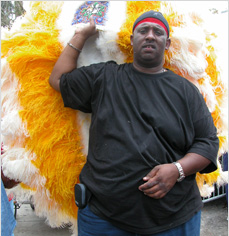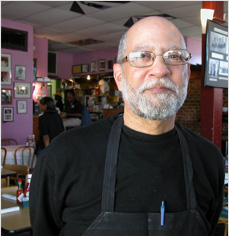|
  Baty Landis helped bring brass bands to perform at shelters where New Orleans residents were staying right after Katrina. "I wanted to remind people of why we live in this crazy city."

  "I just think that the Indians, we signify a ray of hope. There is beauty here in the city, something other than crooked politicians and gunshots."

  "This city is going to come back. Mind you, it won't be the city we knew. Once something has been devastated it won't ever be the way it was."
|
|
  Wayne Baquet, owner of Li'l Dizzy's Café, says he's responsible for luring hundreds of New Orleanians back home. "The first thing they wanted to do after they saw their property and cried a little bit was come to Dizzy's and get some red beans and gumbo."

  Willie Birch says the role of New Orleans artists is to "constantly put things in front of children that say, 'There's another way you can look at your situation. It's all not doom and gloom. There is hope within all of this.'"
|
|
Download the hour-long program or read the transcript.
Videos:
 Nick Spitzer on the importance of New Orleans building arts traditions.
Nick Spitzer on the importance of New Orleans building arts traditions.
 A visit to folk artist Charles Gillam.
A visit to folk artist Charles Gillam.
Nick Spitzer:
The Wisdom of the Second Line
Journalist Katy Reckdahl:
Music is built into every part of life in New Orleans.
Links and Resources
Credits
Routes to Recovery, from American RadioWorks and American Routes, is supported in part by U.S. Programs of the Open Society Institute.
|

